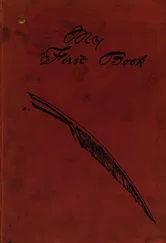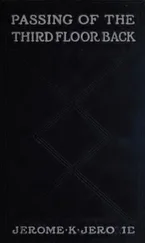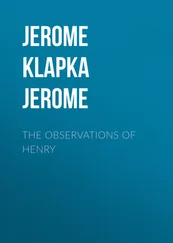Carmody strode over to her, faced her, fingers wrapped around his submachine gun.
“Hands up. Manaile in aer. Now.”
She raised them stiffly over her head. Wheeler shifted over to her, did a hurried pat-down, shook his head to indicate she wasn’t carrying anything.
“Do you speak English?” Carmody said.
She said nothing.
“Do you speak English? Yes or no.”
She hesitated. “Yes. A little.”
Carmody nodded. “Drop your hands,” he said. “Go on.”
She slowly brought them down to her sides.
“Now take a deep breath. In and out.”
She inhaled. Exhaled.
“Again.”
She breathed. Carmody saw her posture relax, some of the tension draining from her shoulders.
“Okay,” he said. “Tell me your name.”
“Clinia.”
“Are you from right around here, Clinia?”
“I live in Cluj.”
“That’s to the south, yes? Este spre sud? ”
“Yes.”
“And that’s where you met him? In Cluj?”
“Yes. Just tonight. At a club.”
“A stim club?”
“Yes. How do you know?”
Carmody didn’t answer.
“Clinia,” he said, “where is he?”
She said nothing.
He took one hand off the gun barrel and flipped up his goggles, wanting her to see his eyes though the opening in the balaclava.
“I’m asking you to tell me where he went, Clinia. It’s very important.”
The woman looked hesitant again. “I’m afraid,” she said.
“Don’t be. We’ll protect you.”
She said nothing.
“He left you behind,” he said. “Tell me.”
She still said nothing. But her eyes broke away from his for a split second.
He caught their trajectory at once. They didn’t go left or right. They went straight down to the floor.
Carmody immediately looked where she’d looked and felt his stomach harden up.
“Shit,” he said.
Even as Carmody and his team reached the Wolf’s tower, the four men descending its long hidden staircase got to the bottom, where they turned down a lighted passageway with bare walls and a hard granite floor.
The passage would divide in about twenty yards. On the left, it ran a few short feet to an automatic steel door. The right branch went coiling through many long yards toward Castle Graguscu’s ancient wine cellars, armory, and torture chamber...and by stages to the main computer room.
The group bore right, following the shorter passage to an automatic steel door. One of the guards held an RFID card to a scanner, and the door whispered open, and they all went through. Emergency power was flowing to this part of the fortress, and overhead lights came up instantly around them.
The multimillion-dollar climate-controlled garage had elicited comments of different types among the Wolf’s chief lieutenants. While most were impressed, a few thought it excessive, joking out of earshot that he had seen too many spy movies. But Drajan Petrovik viewed it as a sensible escape hatch, and tonight’s events were proof of his foresight. He was a big fish, and his enemies trolled deep.
Sunk fifty feet beneath the castle, the garage was shaped like a Y, with concealed exits at each end of the fork on the east and west sides of the castle, and a third exit at the base of the vertical stroke, beyond the estate’s rear gate. Inside were a Mercedes G-Class SUV, two Rezvani Tank X’s, a reflective silver-blue Rolls-Royce Black Badge Ghost sedan, and a hybrid rosso corsa Koenigsegg Regera. Two metallic black Kawasaki Ninja H2R motorcycles stood together in a corner. No one had ridden the bikes since the day they had been tested and tuned.
The man from the Wolf’s tower turned toward the Swiss-built Regera. Among the fastest cars in the world, with a top speed of two hundred fifty miles an hour, it looked like liquid mercury in the wind.
“I’ll drive this beauty,” he told one of the guards.
The guard looked uncertain. “It’s bound to draw their notice.”
He dismissed the question with a shake of his head.
“I’m playing against expectations,” he said, eyeing the car. “Let’s see them catch me if I’m wrong.”
It was 1:00 a.m. when the drones took flight from the extreme western border of Mihail Kogălniceanu Airfield, joint headquarters to the Romanian Air Force’s 863rd Helicopter Squadron and the United States Army’s skeletal Black Sea Area Support Team.
The swarm was composed of a hundred inexpensive cylindrical, 3-D printed, mergeable-nervous-system aerial robots. It had two brain units, the Monarch and its backup possessing higher adaptive and decision-making capabilities. Mixed together in formation were surveillance, radar-jammer, and communications drones, although nearly two-thirds of them carried an explosive payload and were essentially stupid kamikaze bombs.
They deployed from concealed LOCUST II launch tubes with a rapid series of pops, like the sound of a hundred and thirty champagne bottles uncorking two at a time. Pop-pop, pop-pop , they hopped up into the darkness, opened their wings, and climbed high into the sky. The noise startled a flock of cold, sleeping crows in the brambles and sent them swirling up into the snowy night sky, shrieking and cawing in agitated complaint.
Expanding their foldable wings, the drones soared due west over the Wallachian hills.
The launch took under three minutes from start to finish. Besides the distressed crows, its sole witness was the occupant of an unmarked brown Uro KOVAK military vehicle sitting with its left tires on the cracked, heaving old roadway and its right tires on its lumpy dirt shoulder.
When the last pair of drones was airborne, the woman in the driver’s seat transmitted a coded message and started up her engine.
As she pulled away, a smaller flock of seventy-five sleek, flying-wing VTOL Romanian drones took off from a hangar roof at Camp Turzii Air Base near the blacked-out city of Cluj-Napoca, in the central Transylvanian Balkans. They jumped straight up into the air from their launch stands as if on springs, each carrying five and a half pounds of high-yield EPX-1 plastic explosive in its nose for a combined three-hundred-pound payload.
Turzii hosted several rotating Romanian and US squadrons and had been upgraded in recent years to deter the Russian MiG-41 hypersonic stealth fighters and Beriev A-50Us that were aggressively violating Romania’s sovereign airspace with forays over the Black and Caspian Seas. Ironically, the drones were manufactured by the Saint Petersburg–based Kronstadt Group and originally ordered by the Russian client state Iran, which in turn bundled and shipped them to Romania, one of its leading trade partners, as a component of a multimillion-dollar weapons and technology deal. In the complicated landscape of global geopolitics, the arms market was often a circular firing squad.
Be that as it may, the ascent of the little drone cluster was being closely monitored from a place near the Black Sea, seven hundred long miles from Camp Turzii. The observer’s dark eyes fixed raptly on a computer display, he lifted a cup of sweetened Turkish coffee to his lips, drank it in two deep gulps, and followed it with a shot of chilled raki, the anise-flavored spirit sometimes called Lion’s Milk for its strong bite.
He felt the coffee and raki heat up his cheeks, his throat, his chest, his stomach. With his window slightly open to freshen the room’s air, he could hear the tumble of waves against the fortified breakwater. The sea was high and rough tonight, but his lover wasn’t timid. She had gone out on the rocks facing the ocean, walking out near the old Cold War submarine pens.
The entire area was under curfew, and an ordinary citizen might have been stopped by the military police. But Quintessa Leonides was a woman of high status and strong will. The daughter of Bratva’s boss of bosses, she held control of Eastern Europe’s most powerful bank and cryptocurrency exchange. She did as she pleased.
Читать дальше












